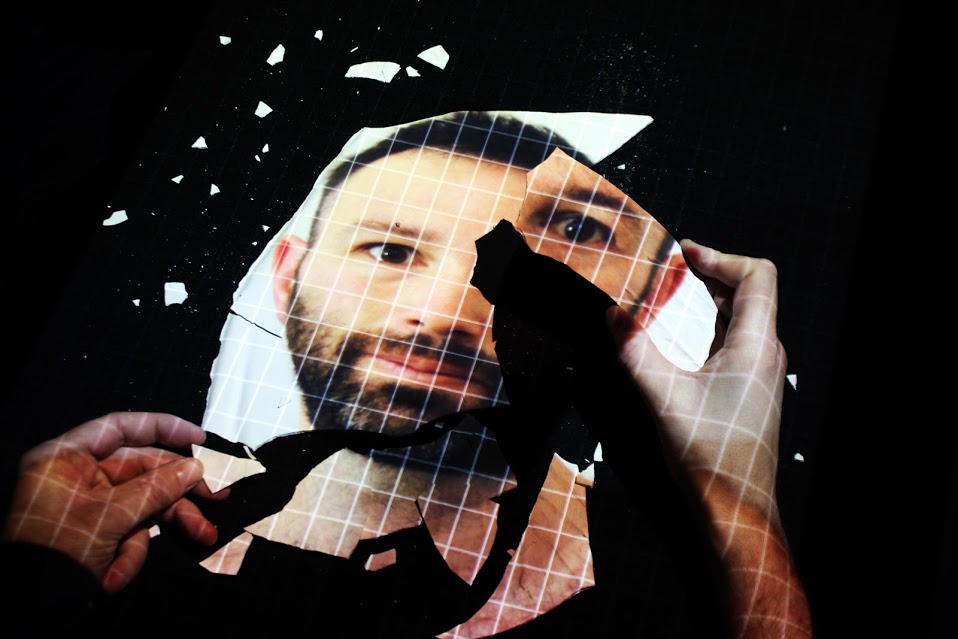Dorothy Max Prior spends a whirlwind 24 hours in Birmingham, enjoying a taster menu of the 10th edition of BE FESTIVAL
We’re onstage at Birmingham Repertory Theatre – not performing in a show, although you could describe it as a performative event. It’s a communal dinner – long tables laid with white tablecloths, vases of flowers and bread baskets, salad bowls dotted along, with plates of chicken or squash curry with rice being served to the tables. The conversation is animated – some are talking about the show we’ve just seen – Edurne Rubio’s documentary in the dark Light Years Away – others are networking madly, or telling their neighbours about the show they’ve already presented this week or are going to present.
This is BE FESTIVAL, the BE stands for Birmingham European, and it is an annual festival of new performance work from across Europe – with discussion about the work a key element to the festival’s unusual structure of three shows per evening, punctuated with dinner. It is curated and produced by Miguel Oyarzun and Isla Aguilar, and this year (July 2019) celebrates its tenth anniversary, having started in response to a public arts meeting held in Birmingham in 2009, where the city requested a greater presence of international work.
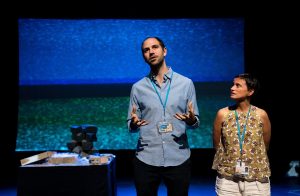
BE FESTIVAL co-founders and directors Miguel Oyarzun and Isla Aguilar
And who better placed than Miguel and Isla to deliver! Both are Internationalists. He is from Madrid, an actor writer and director. She is also Spanish, a curator and editor of visual arts books. Together, they not only present BE for a week in July every year, and produce the BE On Tour programme, but also manage a theatre in Madrid and numerous other projects in the UK, Spain, and throughout Europe.
Isla, Miguel and co-founder Mike Tweddle (who has since left to be director of Bristol’s Tobacco Factory, but stays supportive – he was there in the audience this year) allegedly ‘fleshed out a plan on the back of a napkin at a Birmingham curry house’ – and thus a festival was born. In the early years, they were generously supported by Birmingham based Stan’s Cafe, who gave them use of the company’s AE Harris building. The festival grew, and by 2014, they became an Arts Council National Portfolio Organisation, staffed by a full team of producers and administrators, supported by a merry horde of volunteers, and guided by a board chaired by none other than the Birmingham born and bred Joseph Seelig, founder and co-director of the London International Mime Festival. BE FESTIVAL now work with the Birmingham Rep, using the theatre’s backstage spaces (and the stage!) converting them into a lively shabby-chic bar, the marvellous communal dining area, and three different performance spaces.
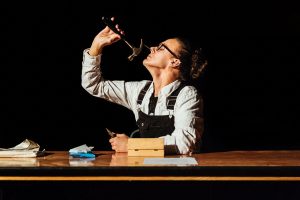
Tom Cassani: Someone Loves You Drive With Care
Work presented in these spaces over the week is an eclectic mix – diverse in every sense of the word. I’m here on a 24-hour flying visit, and things I’ve missed over the previous four days include Dies Irae, a visceral performance piece by Italian provocateurs Sotterraneo; Soul Seekers, a performance-documentary by Iraqi-Belgian Mokhallad Rasem following his and fellow refugees journey to asylum; and German choreographer Paula Rosolen’s provocative Punk, investigating what now remains of the visual language of punk rock, featuring a live band and pogo sticks. Also in this year’s programme: Catalan company Ça Marche presented Silence, which uses a cast of children to explore the future of the world and coexistence with our ghosts; and in Promises of Uncertainty by Swiss circus-dance company Moost, daredevil Marc Oosterhoff transforms into a naive explorer, armed with a teeter-board and a raft of props. There was also a return visit for last year’s winner Tom Cassani – for there is a competition element to this festival. Tom is here to show two works: I Promise You That Tonight is his new piece, presented on Tuesday, the opening night of the festival; and BE 2019 closes on Saturday night with a full-length version of last year’s winning show, Someone Loves You Drive With Care, which channels the spirit of classic sideshow stunts and trickster’s wiles into an odd and intriguing combination of prestidigitation and performance art.
So that’s some of what has gone before in this very full week – now let’s go back to Friday evening, which gives us one full-length show pre-dinner, then two 30-minute pieces afterwards.
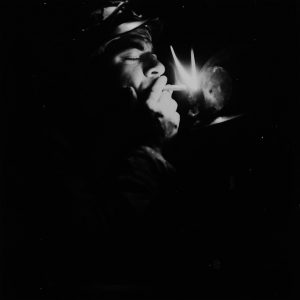
Edurne Rubio: Light Years Away
First we have Light Years Away, by Edurne Rubio, which we happily chew over during dinner. It is a show ‘presented in darkness, transforming its audience into cave explorers’ – sharing the experiences of the artist’s father and uncles as they endeavour to map the caves of Ojo Guareña in Northern Spain.
We are ushered into the tiered, seated theatre space – which is more-or-less dark. There is the clattering of metal buckets, and a spotlight highlights a woman, the artist we presume, who introduces the show, speaking in a hesitant and heavily accented English that is a little hard to understand. Then a projector whirrs into life, and we hear voices – men’s voices, as they move down and through the tunnels and caves. We see pinpoints of light, little flickers of lanterns and flashlights around the space, on screen and live, and we don’t see the men whose voices we hear – so we are placed in the position of fellow explorers moving through the tunnels. I applaud the premise, and the exchanges between the explorers (both mundane and philosophical) are wonderful. Later, there are reflections on the social and political context of the documentary material, set as it is in Franco’s Spain. It is lovely to be taken along on the journey in this way – but there is an artistic and technical dilemma here, as the fact that the men are speaking Spanish means that their words are subtitled, and the subtitles create light pollution, spoiling the key element of the piece – hearing voices in the dark and occasional flashes of light, and imagining we are there with them. From where I am, near the back of the theatre, and thus near the projector, it is actually so bright that I can see all my neighbours very clearly. I end up feeling that I would much rather have done without the subtitles and relied on my rudimentary Spanish, so that I had the experience in the dark the piece needs – but I suppose that wouldn’t be ideal either. Or is dubbing an option? Of course, as it is an aural documentary, the artist might well feel that dubbing in actors’ voices would be anathema. So we have a dilemma: content and form are struggling to work together in the piece, as witnessed. I loved so much about it, in theory, but in practice, it wasn’t working for me. And although I am happy to concede that my dinner conversations only represent a small cross-section of the audience opinion, our end of the table felt united in loving the show’s concept, but finding the presentation flawed.
Which feels the right moment to say that the discussion is key to the ethos of BE FESTIVAL, both the in-person debate over meals and in the bar, and the submitting of post-show reports on postcards that aim to be more than the standard booker’s evaluation form for their funders – in this case, copies get given to the artists, to take what they want from them.
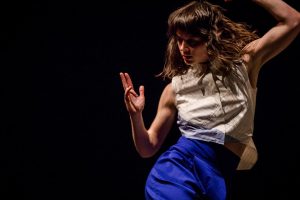
Anna Biczoc: Precedents to a Potential Future
After dinner, it’s time for two more shows: and in this slot – whether excerpts, or shortened versions, or the beginnings of a new show – the brief is that the presentation is no more than 30 minutes.
First up, Precedents to a Potential Future, by Anna Biczók from Hungary, a solo lecture-performance that interrogates the art and craft of dance, and explores what it means to live in the present moment.
We see a woman sitting at a desk talking about the performance we are supposed to be seeing. She outlines what would happen, but then, with a healthy dose of irony and humour, gets up and does it. Take two. Look how flexible she is, what excellent technique she has, what wonderful shapes she makes! She moves into a story about a mother watching a dance performance featuring a dancer with excellent technique, who falls asleep during the performance. Her mother? Her performance? We don’t know, but we presume yes.
Reflections on the real-time present moment, and the immediate past, the here and now (or almost now) in this theatre, and memories of long-past moments, continue to interweave and inter-relate. Is this now? Or this? The piece builds nicely to an intense finale as the philosophical musings are abandoned in favour of full-on physical expression with a rip-roaring soundtrack.
It’s a very cleverly structured and well-executed piece by a talented dance artist, appealing (in my case, anyway) more to the head than the heart. As a lecture-performance about dance – an interrogation of the artform and its mores – it works very well, but I think it’s fair to say that it is a piece that will mostly appeal to those working in dance.
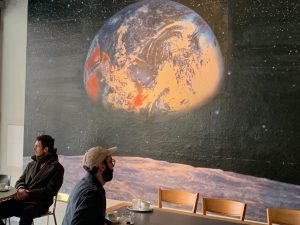
Bertrand Lesca & Nasi Voutsas: The End
The final show of the day is by returning BE FESTIVAL favourites Bertrand Lesca and Nasi Voutsas (France/UK) – they presented Palmyra in 2017, which went on to won a Total Theatre Award at the Edinburgh Fringe that same year. The show is still touring internationally to great acclaim, as are the other two in the trilogy of works exploring ‘contemporary questions’, Eurohouse and One.
New show The End reflects on both the end of the world, and the imagined end of Bert and Nasi’s relationship.
At the back of the space, a table, a laptop, and above them a screen. The words on the screen give us the narrative of the end of the world, the story unfolding through a poetic list that reminds me a little of the old Zager and Evans hit In the Year 2525, outlining what’ll happen to the earth and its fauna, flora, and human occupants as the decades, centuries and millennia pass by. This unfolding future, end-of-the-world as a list device has been explored previously not only by Zager and Evans but also by both Forced Entertainment and Ontroerend Goed, and I feel is thus of less interest than the parallel exploration of endings in the show – the end of Bert and Nasi, the enactment of which is a stroke of genius.
For the duo have chosen to explore the end of their relationship through the medium of interpretative dance. Oh yes! It works, it really does – and for many different reasons. First, the choice of music is inspired – a whole story in itself, tugging us hither and thither. There’s a gorgeous guitar-led country waltz (possibly by Arthur Russell), and a contrasting bombastic classical ballet sequence that gives us some fabulous grands jetés. We get The Beatles’ Across the Universe, and Dionne Warwick’s Walk on By. The men walk – and run, and skip – in circles around the space, following the line of dance; or leap or glide across diagonals. There’s a fabulously frenetic Salsa-ish partner dance to the Latin classic Tanto Tanto Tanto. Meanwhile, the imagined future of the pair unfolds in words: marriage and kids, or not; working together, not working together, trying again, giving up; awkward meetings years later; fizzling out email exchanges; ageing and illnesses; and inevitably, one dying before the other. It is poignant, and funny, and thought-provoking, and lump-in-the-throat heartbreaking – all at one and the same time. Early days for The End, and work needed – but on the evidence of this showing, it’s going to be another hit.
There’s a live band booked for the bar – but I sneak away, not just because I’m tired, but because my head feels very full after seeing three shows in a row…
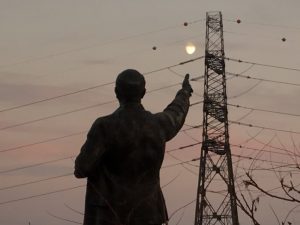
La Conquesta del Pol Sud: A Land Full of Heroes
Saturday finds me back at the Rep, ready and waiting for the midday matinee show. It’s a full-length show – A Land Full of Heroes, by La Conquesta del Pol Sud – a collaboration between a Spanish, French and UK team, about a Romanian artist who moves to Germany. It somehow seems to sum up the best of BE: an experimental, hybrid form; riveting content, entertaining, political and thought-provoking; and created collaboratively by a truly pan-European team.
Form-wise, it mixes journalistic research, and film documentary with live onstage fictionalised biography, poetic text, and movement. Scenography is a key element, not a decorative add-on – the excellent set and video design is by Eugenio Szwarcer, one half of La Conquesta del Pol Sud – and the show is directed by the other half, Carles Fernández Giua. A Land Full of Heroes is supported by the Testimony in Practice project being led by researchers at the University of Birmingham. The company are presenting a workshop in tandem with the show – called ‘Archive, Memory, Performance: presenting “true stories” on stage.’
Screens are at the heart of the scenography: there’s a traditional back-wall film screen, and a chequered structure that performers can move behind and around that can be projected onto. The piece is multi-layered, the layers unfolding and revealing like a Matryoshka nesting doll structure. We first (on screen) encounter the Conquesta del Pol Sud team creating a road-movie re-enactment of Romanian writer Carmen-Francesca Banciu’s flight to Berlin. We then meet two female actors, playing the writer at different ages, and playing Maria Maria – the character from Banciu’s books who most resembles her. So we have fiction and non-fiction mixed throughout the piece, on screen, on stage, and in our imaginations, as excerpts from Banciu’s writings are spoken aloud and acted out. There is an extra layer of intrigue in the fact that the older woman, whilst a wonderful performer with immense stage presence, has a way of being onstage that suggests she is not acting, she is performing the self. Could it be Carmen-Francesca Banciu herself? There is no indication of this in the programme notes, but it becomes increasingly obvious and a minimal amount of internet research brings it up – yes, she is credited as co-creator and performer. And is the young actress with the shared surname her real daughter, or is that a theatrical device? Yes, it would seem she is! There are some extraordinary scenes, as, for example, when Carmen Francesca Banciu sits and witnesses her daughter Meda G. Banciu playing her younger self, cloaked in the veil of the fictional Maria Maria.
Carmen-Francesca’s (or is it Maria Maria’s?) personal biography becomes the metaphor for the late twentieth century European experience. Through her story, we explore the collapse of the socialist regimes of Eastern Europe, the particular and individual experience informing and elucidating what we know through our history books. And in her longing for a new life in a free Western Europe, all the hopes and dreams of the ‘European project’ are highlighted. Berlin, where she eventually finds herself in the 1990s, acts as a kind of teasing mirage. This is openly acknowledged in the piece, and the fantasy alternative life that Berlin represents is the central axis around which all else revolves. It is particularly interesting to witness how the Berlin-born German speaking daughter who has never known war and oppression, and the Romanian speaking refugee mother, who still bears the scars of a childhood and young adulthood living under the Communist regime, explore their different takes on the world. Meda enacting a relentless interrogation by the authorities (which goes on daily for months) for not being quite loyal enough to the regime, for daring to think and write, says more about how it was to grow up in Romania in the Communist era than any detached factual account could ever do.
An extraordinary piece that proves that political theatre can use a cross-artform approach, and experiment in form, whilst simultaneously conveying the truth of real-life historical and biographical experience. A Land Full of Heroes is, indeed, a powerful testimony in practice.
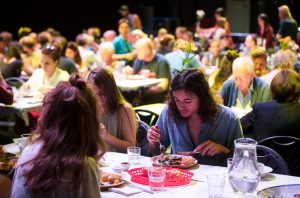
BE communal meals. Photo Alex Brenner
So, reeling with the fullness of this wonderful piece, we move into the cafe-bar for a brief networking meeting (another element of the festival programme) and then on to the dining area to take our places for lunch. After which, I head off into the mad medley of roadworks and redevelopment that is Birmingham city centre (local joke: ‘They’ll have finished Birmingham soon) and head to the train station.
I’m leaving behind a vibrant community of artists, producers, and audience members – a local, national and international medley. On the menu for the rest of the day: the Feedback Cafe, the BE Youth Theatre group, three more shows, an interval dinner – and a late night awards ceremony and closing party.
Just 24 hours in Birmingham – but 24 hours filled to the brim with wonderful experiences. I leave well-fed in body, mind and spirit. Bravo BE – a truly unique festival experience. Here’s to the next ten years!
Featured image (top): Aiguafreda, 1981. Artwork by BE FESTIVAL artist in residence Francesc Serra Vila, who will be responding to the 2019 festival and its given theme of Archive and Memory. He will present at BE FESTIVAL 2020.
BE FESTIVAL champions emerging artists in theatre, dance, circus and visual artists from across Europe. The festival’s ethos is rooted around creating community and connection through diverse arts and culture.
BE FESTIVAL celebrated its 10th edition in 2019, and ran from 27 June to 6 July 2019. Dorothy Max Prior attended Friday 5–Saturday 6 July as a guest of the festival.
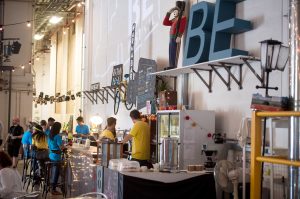
BE FESTIVAL bar. Photo Alex Brenner

